10 FAQ for Visiting Amboseli National Park, Kenya
Kenya, Africa / May 20, 2025 / 13 comments
I was lucky enough to spend a birthday in one of the most magical places on earth – Amboseli. Visiting Amboseli National Park was on my radar since I realized that Lion King was inspired by Kenya. The sheer number of elephants in such a small area called to me.
Amboseli National Park is the largest national park in Kenya. It’s home to the iconic safari image of an elephant standing proudly in front of Mt. Kilimanjaro. Often overlooked for the more famous Serengeti National Park or Masai Mara – Amboseli should not be skipped during a safari in Kenya. Be sure to click on the image below and get your free Kenya guide perfect for planning.
If you like this post, be sure to sign up for my e-mail list for travel inspiration (and get your FREE budget printable), or connect with me on Facebook, Instagram, Twitter, or Pinterest.
This post contains affiliate links. This means if you purchase something from a link, I may make a small commission, at no cost to you. This helps me keep the site running and free.
Where is Amboseli National Park?
Amboseli is located in Kenya’s Kajiado County in the south-central part of the country. Kilimanjaro descends and forms the Great Rift Valley in the west, and Nairobi is almost directly north of it.
If your safari includes transportation to and from Nairobi, then this could easily be a stop for a night or two. It takes half the amount of time to get to Amboseli instead of the Maasai Mara and has much of the same animals!
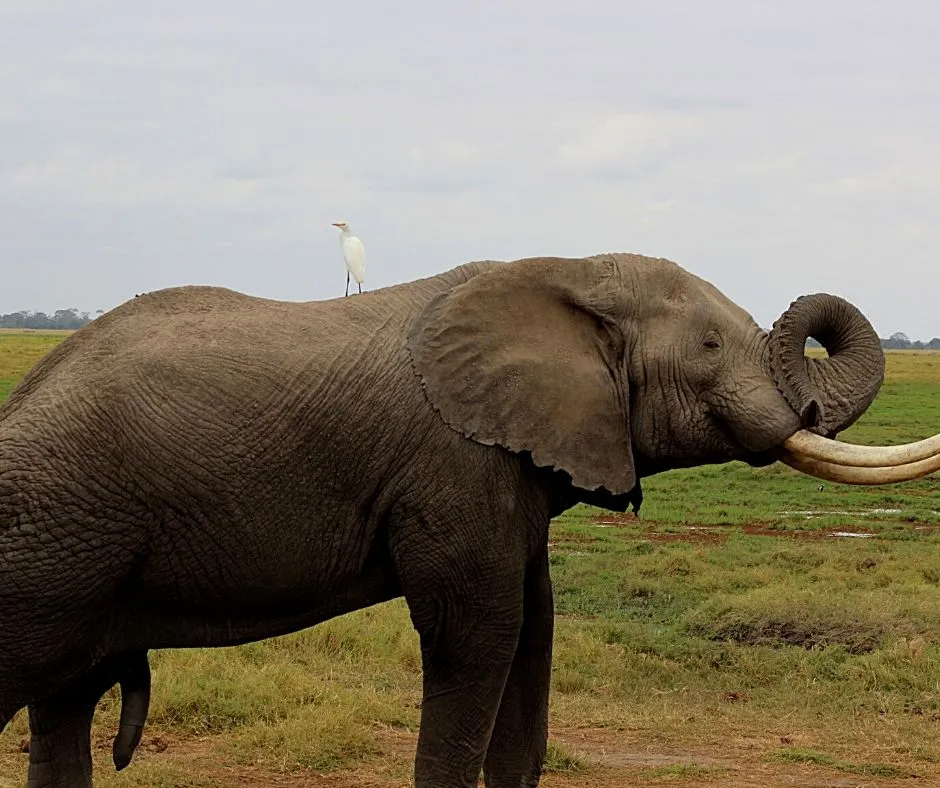
How do you reach Amboseli National Park?
Most people arrive at the park via driving on safari. Amboseli is one of the best safari parks in Kenya – so if you’re working with a tour company be sure that they visit this one. Sunworld Safaris, the company we used, already included it in the itinerary so I had nothing to worry about.

How big is Amboseli?
Relatively speaking, Amboseli is quite small. It’s only 392 square kilometers (about 150 square miles). For comparison, the Serengeti National Park is 14,763 square kilometers (5,700 square miles).

What does Amboseli mean?
The name is derived from the Maasai language ‘Maa’ and means ‘salty dust.’ In the dry season, the lakes can disappear and result in dust clouds!
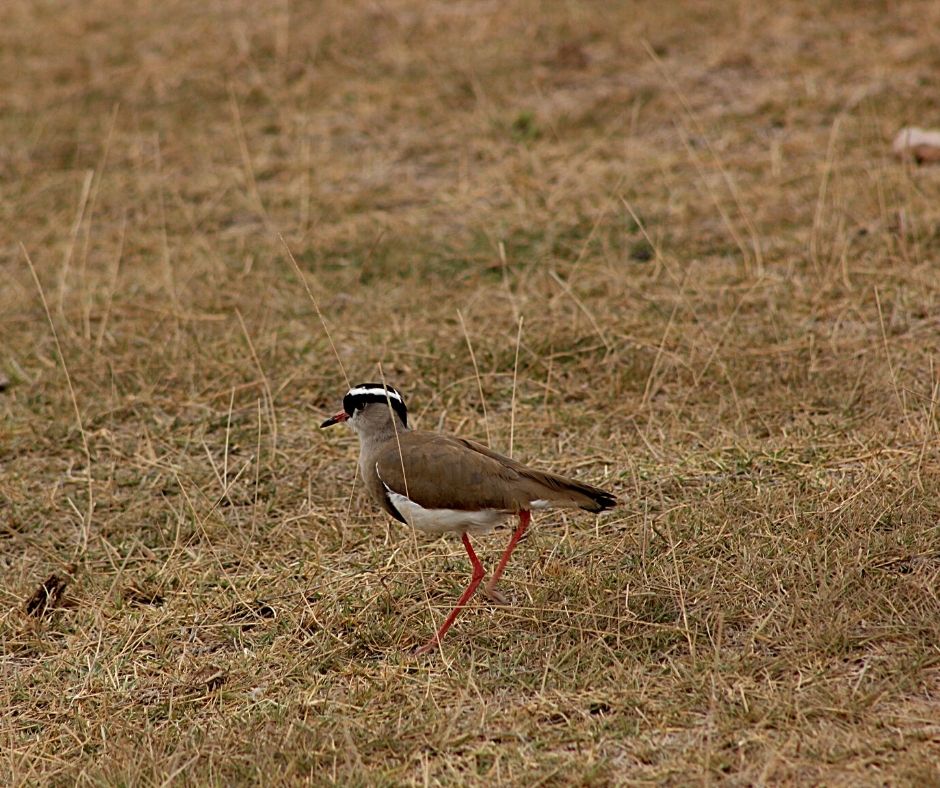
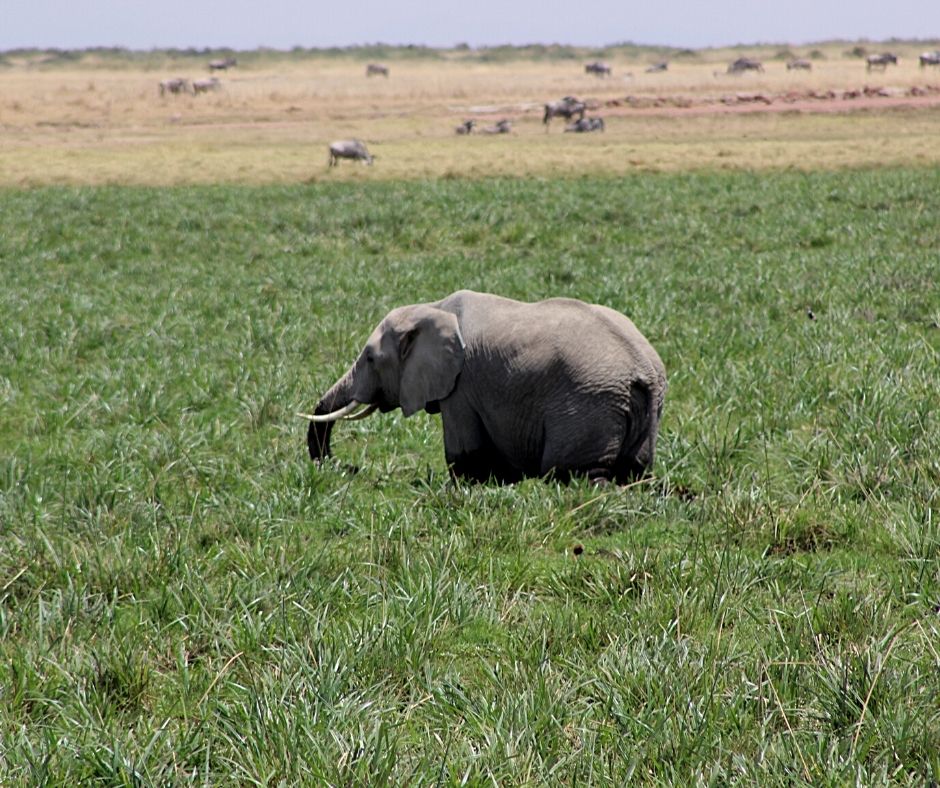

What makes Amboseli unique?
Amboseli rests at the base of Mount Kilimanjaro – the tallest freestanding mountain in the world and the highest summit in Africa. The impressive mountain stands tall making even the elephants look tiny.
It also has the most condensed population of elephants in Kenya. The sheer quantity of elephants here is enough to make your jaw drop. These elephants are the most studied in all of Africa. The Amboseli Trust for Elephants have been researching these elephants for over 40 years and are the leading expert in elephants.
The Maasai people and culture are alive and well in Amboseli and you can get an up-close look at their lifestyle.
Amboseli also has a fresh underground water supply from the feet of the Kilimanjaro ice cap. Two clear springs have formed at the heart of the park.
There is an observation hill with patio furniture which is perfect for a snack. You can see the beautiful landscape for miles and even see Lake Amboseli and Mount Kilimanjaro. We were able to have lunch with hippos relaxing in the marshland nearby!

What is the environment like in Amboseli?
For being such a small park, Amboseli National Park is profoundly biodiverse. The park has a lake basin, known as Lake Amboseli. It also has five different wildlife habitats – swaps, open plains, acacia woodland, marshland, and rocky thorn bush.
Okay – but what animals can I find in Amboseli?
A lot. Like – a ridiculous amount! There are over 400 species of birds alone that call Amboseli National Park home. There are over 80 species of mammals as well. This includes the Big Five safari animals – the cape buffalo, rhinoceros, leopard, lion, and elephant. In fact, Amboseli has the most condensed number of elephants in Kenya – with over 1200 calling the park home.


When is the best time to visit Amboseli National Park?
The only time you really do not want to visit is during the rainy season – April May, November, and December. I would recommend visiting January, February or June- September.
The dry season is the best because herbivores gather near the few watering holes making spotting them easy. The carnivores also go to the watering holes in search of prey. Less watering holes means a greater chance of seeing both hunter and prey.
What are the essentials that I need for Amboseli?
Amboseli is really close to the equator, meaning the annual temperature doesn’t really change. It’s typically hot, with temperatures ranging between 80-85 degrees F (27-30 degrees C). Keep this in mind when you’re packing!
Sunglasses, warm clothing (game drives take place usually at sunrise and sunset so it can be chilly), a zoom lens for your camera (I used the 300m lens the most and let the others in my group use their smaller lenses).
Important tip: Single-use plastic is banned within ALL Kenyan national parks and conservation areas. Be sure to bring a reusable water bottle.


Where can I stay in Amboseli National Park?
Luckily, the park has accommodation options for every budget! The Kenya Wildlife Service operates a number of self-catering bandas (or simple cottages). They also have three service bandas which offer basic accommodations.
We stayed at Amboseli Olktukai Lodge. It has incredible views of Kilimanjaro and we got to enjoy views right from the pool!
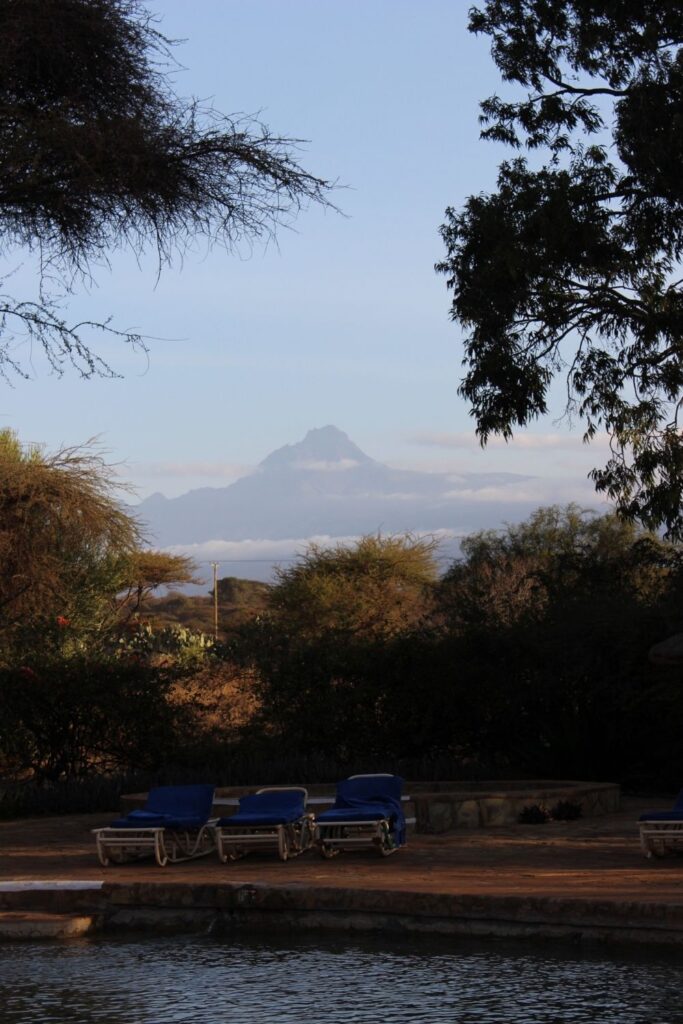
Do you have any questions about visiting Amboseli? Let me know in the comments!
Pin “Visiting Amboseli National Park” for later
About the Author
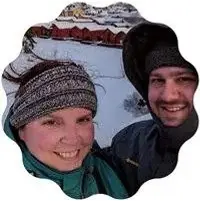

13 responses to “10 FAQ for Visiting Amboseli National Park, Kenya”

I’ve lived in Africa most of my life and I’ve never been on safari. This place looks incredible. Thanks so much for the information.

Your photography really puts me on a virtual safari.

This is a really helpful guide for people visiting this national park. There’s so many things to consider!

I’ve never heard of the Amboseli National Park, but it looks amazing! I love that this place is packed full of animals and that you can see so many roaming around. I love birds, so I would enjoy checking out hundreds of them. Definitely putting it on my list!

I love the adorable little monkeys. The colorful garments worn by the Maasai women are gorgeous.

I always wanted to visit Kenya! Your photos from Amboseli Park really inspire me to add this place to my bucket list! And I love that you added so much useful information as well – great work!

I love this article. I would love to visit Kenya and see these wonderful animals in their habitat. Great article, I love it!

Wow! This is so cool. And not just the animals, the group of women singing were pretty impressive as well. I think the name Amboeli sounds a lot better than what it means in English.

Visiting Amboseli Park seems like a lifetime experience! I loved your photos and how you caught these magical moments! So inspiring! Thanks for sharing this article!

what an incredible experience!!! thank you for the inspiration!

One of my favourite things in the world is going on an African Safari, Amboseli is definitely on my list too. Thanks for sharing and your photos are wonderful

Visiting Amboseli National Park has been on my bucketlist for AGES! Honestly I cannot wait to go.

I still haven’t been to the continent, let alone an African safari, but woww there’s just sooo many places to choose from! I have been leaning towards making Kenya my first destination (because giraffes!!) so I’m so excited to have read this post! Definitely going on my Kenya bucketlist, and I love that they’re firm on no single use plastics!



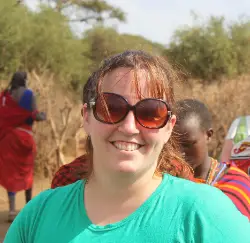



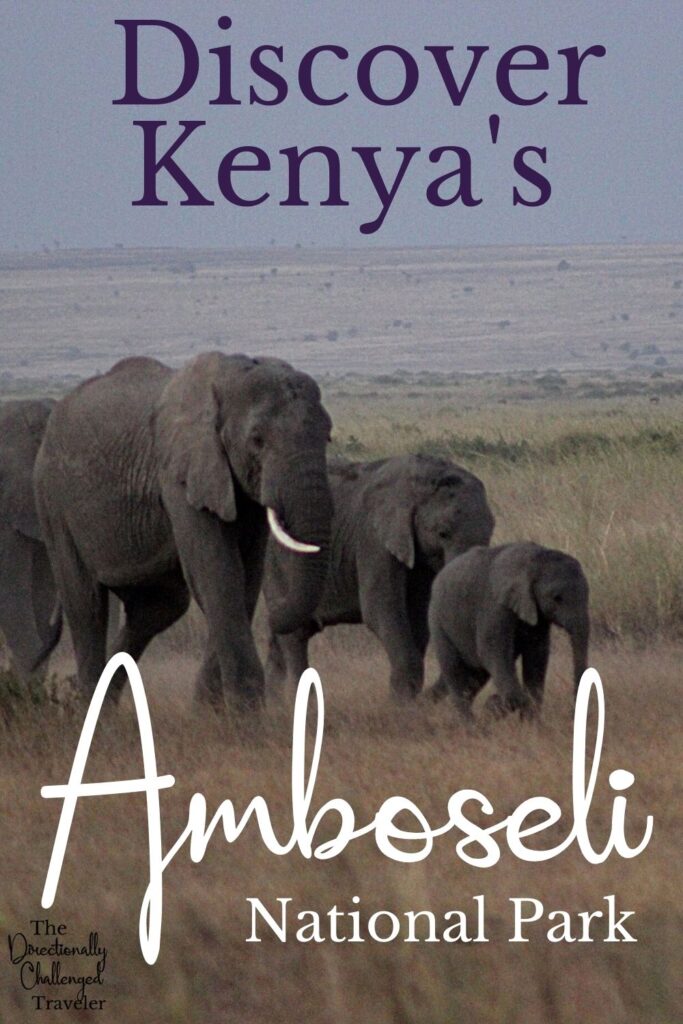




Leave a Reply